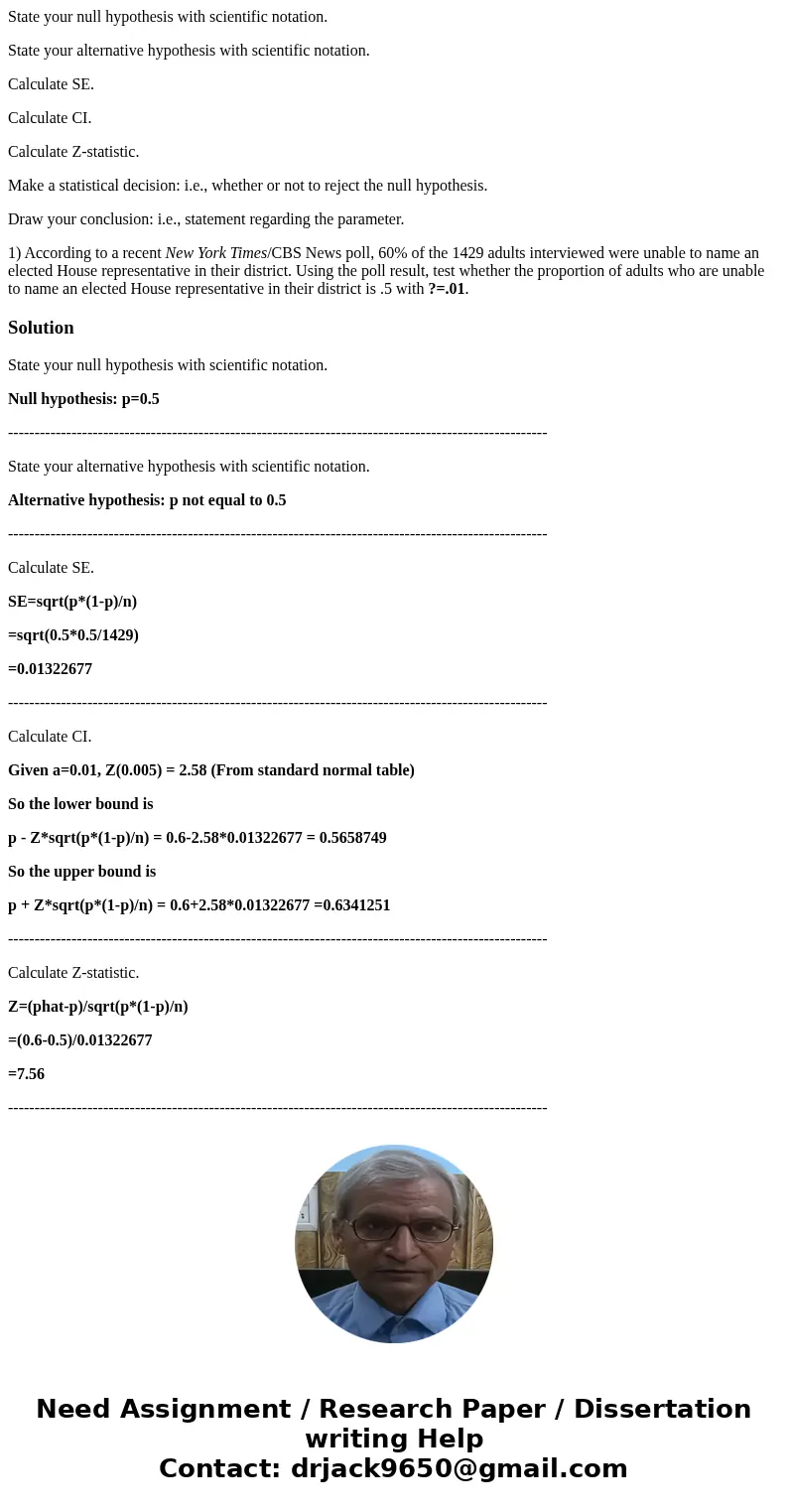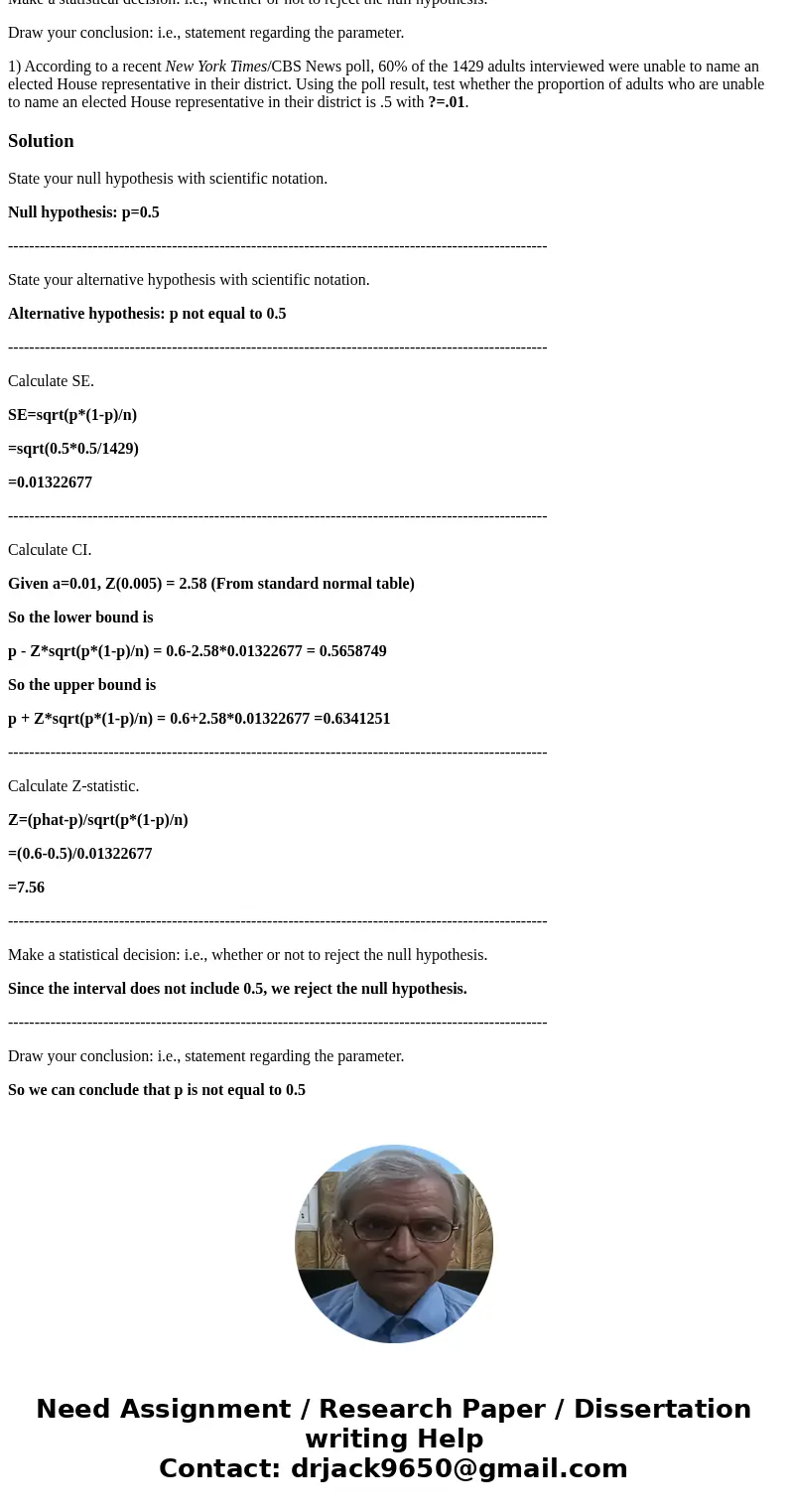State your null hypothesis with scientific notation State yo
State your null hypothesis with scientific notation.
State your alternative hypothesis with scientific notation.
Calculate SE.
Calculate CI.
Calculate Z-statistic.
Make a statistical decision: i.e., whether or not to reject the null hypothesis.
Draw your conclusion: i.e., statement regarding the parameter.
1) According to a recent New York Times/CBS News poll, 60% of the 1429 adults interviewed were unable to name an elected House representative in their district. Using the poll result, test whether the proportion of adults who are unable to name an elected House representative in their district is .5 with ?=.01.
Solution
State your null hypothesis with scientific notation.
Null hypothesis: p=0.5
------------------------------------------------------------------------------------------------------
State your alternative hypothesis with scientific notation.
Alternative hypothesis: p not equal to 0.5
------------------------------------------------------------------------------------------------------
Calculate SE.
SE=sqrt(p*(1-p)/n)
=sqrt(0.5*0.5/1429)
=0.01322677
------------------------------------------------------------------------------------------------------
Calculate CI.
Given a=0.01, Z(0.005) = 2.58 (From standard normal table)
So the lower bound is
p - Z*sqrt(p*(1-p)/n) = 0.6-2.58*0.01322677 = 0.5658749
So the upper bound is
p + Z*sqrt(p*(1-p)/n) = 0.6+2.58*0.01322677 =0.6341251
------------------------------------------------------------------------------------------------------
Calculate Z-statistic.
Z=(phat-p)/sqrt(p*(1-p)/n)
=(0.6-0.5)/0.01322677
=7.56
------------------------------------------------------------------------------------------------------
Make a statistical decision: i.e., whether or not to reject the null hypothesis.
Since the interval does not include 0.5, we reject the null hypothesis.
------------------------------------------------------------------------------------------------------
Draw your conclusion: i.e., statement regarding the parameter.
So we can conclude that p is not equal to 0.5


 Homework Sourse
Homework Sourse